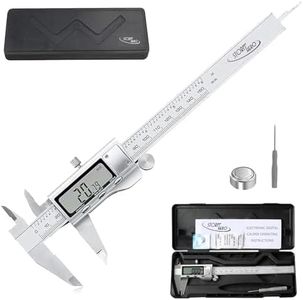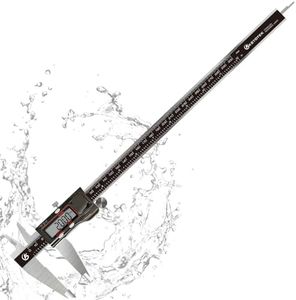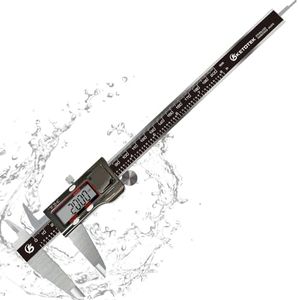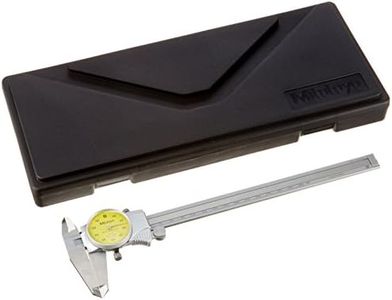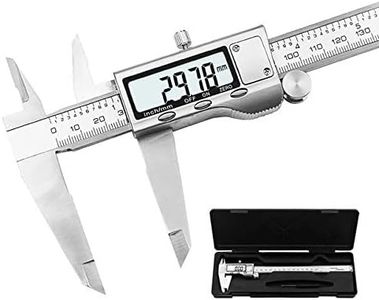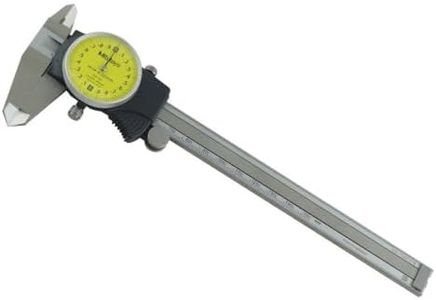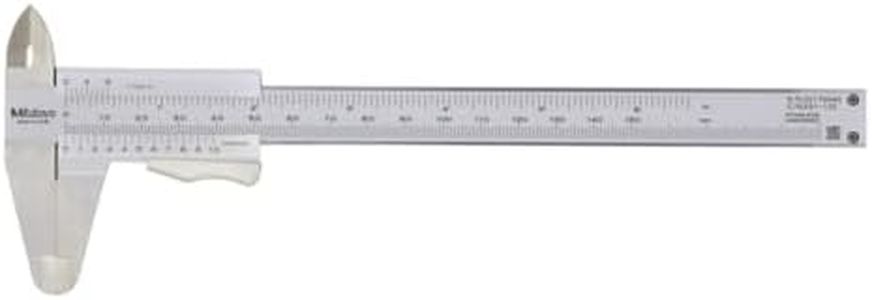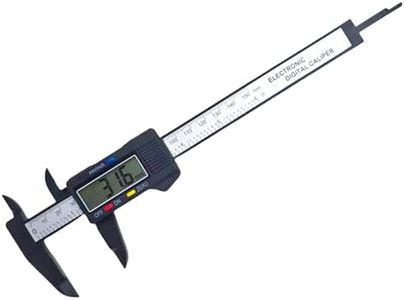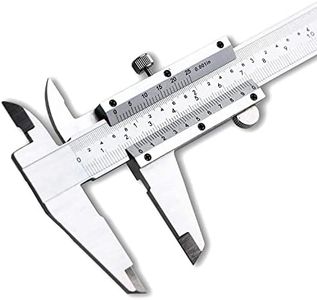We Use CookiesWe use cookies to enhance the security, performance,
functionality and for analytical and promotional activities. By continuing to browse this site you
are agreeing to our privacy policy
10 Best calipers
From leading brands and best sellers available on the web.By clicking on a link to a third party's website, log data is shared with that third party.
Buying Guide for the Best calipers
Selecting the right caliper is important for accurately measuring internal and external dimensions, depths, or steps of various objects. Calipers are widely used in fields such as mechanical work, woodworking, science labs, and for general household use. To choose the best caliper for your needs, it's helpful to understand the various types and key features/caliper specifications that can impact accuracy, ease of use, and durability. Matching these features to your intended uses will help you make a great choice.Type (Vernier, Dial, Digital)The type of caliper refers to how measurements are displayed and how you read them. Vernier calipers use a sliding scale and require some practice to read accurately; they are rugged and have no electronics. Dial calipers have a magnified dial that makes measurements easier to read, though the dial can sometimes get misaligned. Digital calipers have an electronic display, making them the easiest and quickest to read, and often include extra features like switching between metric and imperial measurements. Choose the simplest and most comfortable display method for you: digital if you value speed and ease, dial for clear mechanical reading, or vernier if you don't mind manual reading and want a classic, robust tool.
Measurement RangeThe measurement range is the maximum length or diameter a caliper can measure, commonly 150mm (6 inches), 200mm (8 inches), or 300mm (12 inches). Shorter calipers are more handy and easier to manipulate, suitable for smaller objects and general use, while longer calipers can handle larger items but may be bulkier and harder to use in tight spaces. Consider what size objects you most often measure; pick a range that comfortably covers your typical needs without being unnecessarily large.
Accuracy and ResolutionAccuracy describes how close the caliper’s reading is to the actual size, and resolution is the smallest unit the caliper can display or differentiate. Higher accuracy and finer resolution are better for precise work (such as engineering, machining, or scientific experiment), whereas for general household or DIY use, standard accuracy and resolution are typically sufficient. Check if your tasks require professional-level precision or just a reasonable estimation—let this guide whether you choose a caliper with standard or high-precision readings.
Build MaterialCalipers are made from various materials including stainless steel, plastic, and composite materials. Stainless steel calipers are durable, precise, and resistant to corrosion, making them the choice for professional and heavy-duty work. Plastic calipers are light, inexpensive, but less durable and less precise—suitable for educational, hobby, or occasional use. Choose based on how often and in what environment you’ll use the caliper; prioritize durability for regular and demanding use.
Ease of Use and Extra FeaturesSome calipers offer extra features such as locking screws, thumb rollers for smooth movement, data output (digital models), or depth measurement rods. Features like these can make your measuring process smoother and more error-proof, especially for beginners or for repetitive tasks. If convenience and speed are important for you, or if you struggle with fine manual control, look for features that enhance usability.
